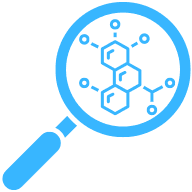Using Biostatistics to Advance Public Health Initiatives: 6 Success Stories
Imagine transforming the understanding of population health through the meticulous science of biostatistics. The article begins by exploring how a Dentist identifies dental caries risk factors and closes with insights on recognizing environmental health risks, providing six diverse strategies in total. Discover the crucial ways biostatistical analysis shapes and enhances the well-being of communities.
- Identify Dental Caries Risk Factors
- Reveal Cancer Screening Disparities
- Predict Infectious Disease Outbreaks
- Optimize Resource Allocation
- Develop Effective Health Education Campaigns
- Identify Environmental Health Risks
Identify Dental Caries Risk Factors
As a dentist, I had the opportunity to collaborate on a public-health initiative aimed at reducing the incidence of dental caries in children within our community. We utilized biostatistical methods to analyze data collected from local schools regarding oral health habits, access to dental care, and dietary patterns. By employing statistical techniques, we could identify specific risk factors associated with higher rates of cavities among children. For instance, we discovered a strong correlation between sugary-snack consumption and increased dental caries, which prompted us to focus our educational efforts on promoting healthier dietary choices.
The impact of this work was significant. By presenting our findings to local health authorities and schools, we were able to advocate for targeted interventions such as nutrition workshops and improved access to preventive dental care. The initiative not only raised awareness about the importance of oral health but also led to the implementation of school-based programs that provided healthier snack options. Over time, we monitored the rates of dental caries in participating schools and observed a marked decline in cases. This experience underscored how biostatistics can drive meaningful change in population health by informing policies and programs that address specific community needs.

Reveal Cancer Screening Disparities
Biostatistical analysis revealed disparities in cancer screening rates among demographics. This crucial finding enabled health professionals to identify which groups were under-screened and at higher risk. By understanding these patterns, targeted screening programs were developed to reach and encourage these vulnerable populations.
As a result, early cancer detection rates improved significantly. The success highlighted the power of data-driven approaches in tackling public health issues. Focus efforts on using biostatistics to uncover and address hidden health disparities.
Predict Infectious Disease Outbreaks
Researchers used epidemiological models to predict and control infectious disease outbreaks. Predictive models provided insights into how diseases might spread based on various factors. This knowledge allowed public health officials to implement timely and effective interventions to halt the spread.
Past successful containment of outbreaks showcased the critical role of biostatistics in public health preparedness. Robust data models are essential for forecasting and mitigating future health crises. Embrace biostatistics to predict and manage infectious disease threats.
Optimize Resource Allocation
Statistical modeling helped optimize resource allocation for public health interventions. By accurately determining where resources were most needed, these models ensured that funds, manpower, and medical supplies were used efficiently. This strategic allocation improved the overall impact and effectiveness of public health programs.
A more equitable distribution of resources was achieved, benefiting underserved communities. This approach demonstrated the economic and social benefits of informed decision-making. Use statistical insights to allocate resources more effectively in public health campaigns.
Develop Effective Health Education Campaigns
Biostatistics enabled the development of effective health education campaigns based on risk factors. By analyzing data on behavioral and environmental risk factors, public health experts crafted targeted messages that resonated with specific groups. These personalized education efforts led to more significant behavior changes and lower-risk behaviors.
The campaigns saw higher engagement and better health outcomes among the population. This method proved that tailored education can bridge the gap between knowledge and action. Consider customizing health education initiatives through detailed biostatistical analysis.
Identify Environmental Health Risks
Data analysis identified environmental factors contributing to chronic diseases in specific populations. By correlating health data with environmental variables like pollution, access to green spaces, and housing conditions, scientists uncovered important links. These findings guided policy changes and public health interventions aimed at mitigating these factors.
Chronic disease rates dropped in areas where environmental improvements were made. This approach illustrated how addressing root causes can lead to significant health benefits. Apply data analytics to identify and mitigate environmental health risks.

